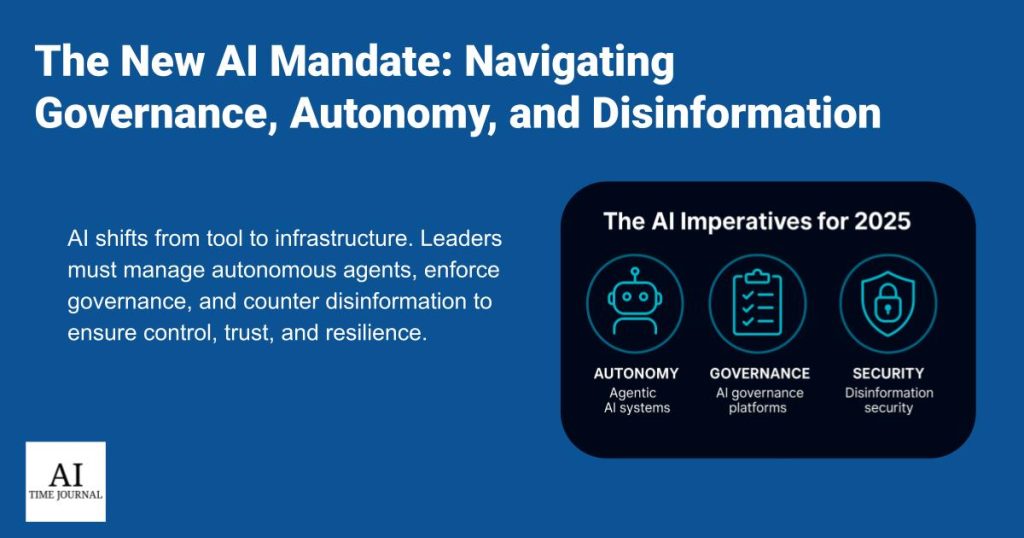
As AI rapidly transitions from experimentation to infrastructure, its implications are no longer confined to labs or startups. In 2025, organizations must confront AI not just as a productivity lever, but as a strategic and often existential risk domain. Three AI-centered priorities now dominate enterprise and government agendas: Agentic AI, AI Governance Platforms, and Disinformation Security.
This article explores what these imperatives mean, what’s driving their urgency, and how leaders can respond.
1. Agentic AI: From Assistants to Autonomous Actors
What it is:
Agentic AI refers to systems that can plan, decide, and act independently within defined boundaries. Unlike traditional passive AI models that respond to explicit prompts, agentic systems proactively pursue goals, whether automating workflows, managing inventory, or coordinating software development.
Why it matters in 2025:
- Open-source frameworks like AutoGPT and BabyAGI have demonstrated early capabilities and are rapidly evolving.
- Enterprises are deploying domain-specific agents to reduce human-in-the-loop dependencies in areas like IT ops, marketing, and customer support.
- Regulatory and ethical frameworks have yet to catch up, leaving critical questions around accountability and control unanswered.
Key challenge:
Balancing control with autonomy. How can organizations ensure agentic AI aligns with human intent, without micromanaging every decision it makes?
2. AI Governance Platforms: Trust is the New Infrastructure
What it is:
AI governance platforms are emerging as the “DevOps” of machine learning, offering tools for visibility, bias detection, compliance, and model lifecycle management. They standardize how AI is built, evaluated, and deployed at scale.
Emerging capabilities:
- Dataset lineage and documentation
- Bias and fairness auditing
- Policy-driven model deployment
- Integration with legal, audit, and compliance systems
Enterprise adoption trend:
AI oversight is no longer just a technical concern. CISOs, CIOs, and boards are demanding enforceable guardrails, especially in regulated sectors like finance and healthcare, where AI cannot scale without trust and traceability.
“We don’t just need explainability, we need enforceability.”
— Common refrain from AI risk officers across financial and healthcare sectors
3. Disinformation Security: Defending Reality in the GenAI Era
The threat:
Generative AI has dramatically lowered the barrier to creating convincing fake content, from deepfake videos to synthetic voice impersonation. Nation-states, scammers, and rogue actors now have tools to manipulate perception, target individuals, and erode institutional trust.
Key developments:
- Enterprises invest in authenticity infrastructure (e.g., watermarking, provenance tracking).
- Startups are emerging with AI-native security solutions designed to detect and counter synthetic threats.
- The U.S. and EU are actively exploring legislation around content labeling, digital identity, and platform liability.
2025 imperative:
Safeguard the information ecosystem both internally and publicly. Disinformation isn’t just a societal threat anymore; it’s a reputational and operational business risk.
Final Thoughts: A Strategic AI Reset
The excitement around generative AI has dominated headlines, but beneath the surface, the real transformation is structural. In 2025, organizations must reframe their AI strategies around three pillars: autonomy, accountability, and information integrity. That means building with AI, but also around it, with systems for control, ethics, and resilience.
The next phase of AI is not only more powerful but also more consequential. The leaders who anticipate these shifts will shape how society experiences intelligence at scale.
